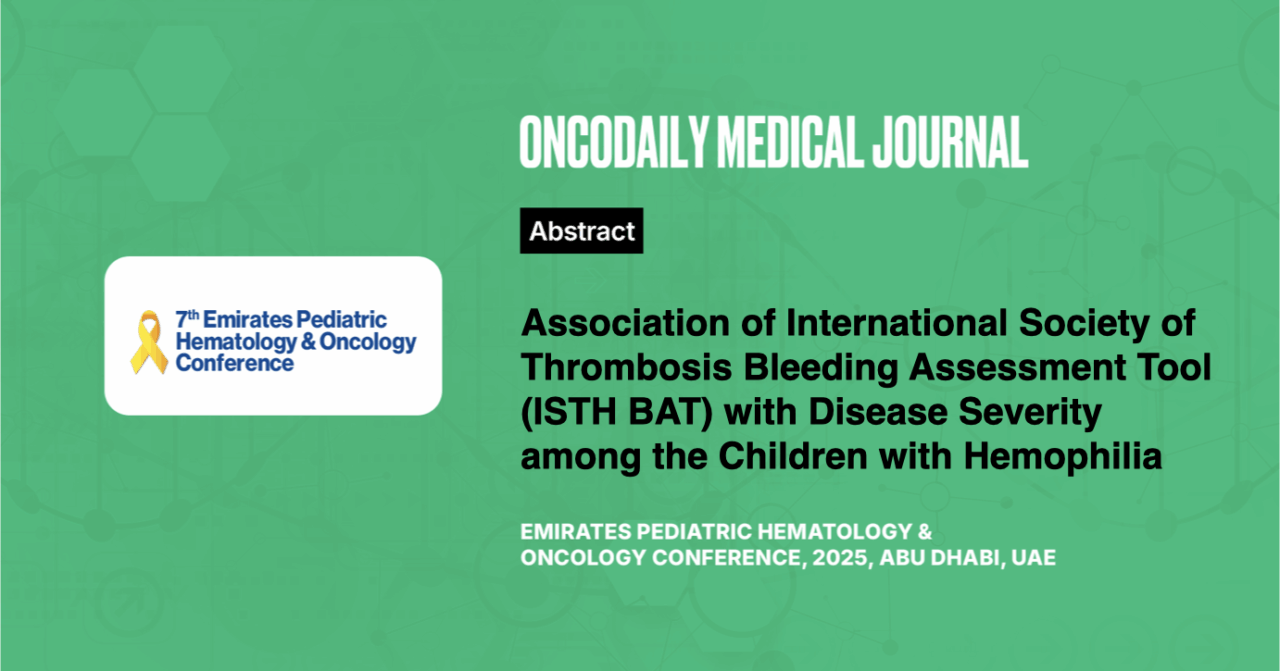Association of International Society of Thrombosis Bleeding Assessment Tool (ISTH-BAT) with Disease Severity among the Children with Hemophilia
Abstract
Introduction: The International Society of Thrombosis and Haemostasis Bleeding Assessment Tool (ISTH-BAT) is a clinical tool designed to standardize the assessment of bleeding symptoms and provide a quantifiable measure of bleeding severity. Its application in pediatric patients with hemophilia has been less extensively studied. Understanding the correlation between ISTH-BAT scores and the severity of hemophilia could provide valuable insights into the disease’s progression and guide therapeutic interventions in resource-limited settings where factor assays may not be readily available. The study aims to evaluate whether there is an association between ISTH-BAT scoring and disease severity among children with hemophilia presenting at NICH.
Methodology: A cross-sectional analytical study was conducted at the National Institute of Child Health from January 2022 to December 2023. All male children aged 15 years presenting with bleeding and diagnosed based on a factor assay or already diagnosed based on a factor assay, presenting with complications, were included in the study, while patients on anticoagulant therapy were excluded.
The study-specific Case Report Form (CRF) and ISTH-BAT were assessed and filled by the Primary Investigator on the standard score CHART. Clinical history and assessment of bleeding, such as type, site of bleeding, intracranial bleeds, and number of joints involved, were recorded, and ISTH-BAT scoring was applied. The association between site (grouped by continent) and positive Bleeding Score and normal/low factor levels was tested using the Pearson chi-squared test.
Results: A total of 42 patients were included: 35 (83%) had severe hemophilia (<1% factor level), 4 (9.5%) had moderate hemophilia (1-5%), and 3 (7.5%) had mild hemophilia (5-50%). Mean FVIII level in hemophilia A was 0.67 IU/mL (range: 0.10-1.75 IU/mL). Median bleeding score was 4 (range: 35). A significant association was found between ISTH-BAT scores and disease severity; higher scores corresponded to more severe disease. Children with severe hemophilia were diagnosed earlier and experienced more frequent bleeding episodes compared to those with moderate or mild disease.
Findings demonstrate the utility of ISTH-BAT in assessing hemophilia severity in pediatric populations. Statistically significant correlation supports its use as a supplemental factor where assays are unavailable. However, the study’s small sample size highlights the need for larger-scale research to validate these results and optimize the ISTH-BAT application in clinical practice.
Conclusion: ISTH-BAT is a clinical Score that gives good comparable results whether factor levels are not known and may guide management when the treating physician is unaware of factor levels.





